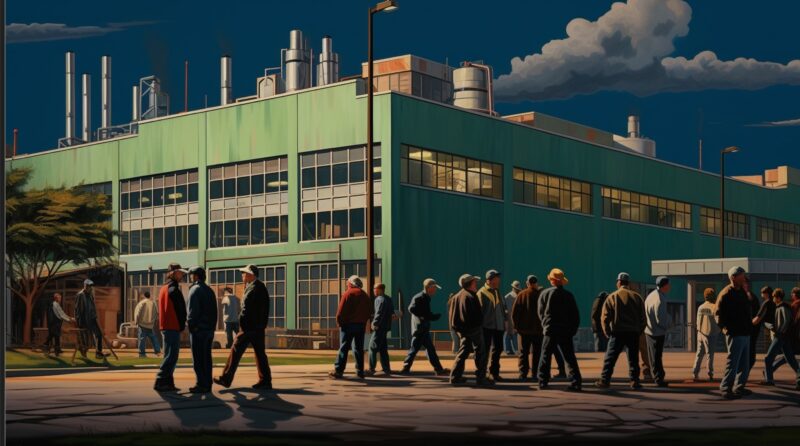
In the sprawling world of automobiles, where roaring engines often overshadow the quiet murmurs of assembly lines, a significant new shift is echoing across Detroit.
The United Auto Workers (UAW) union, long a beacon for the rights and conditions of automotive workers, has once more risen, setting a battleground over stalled contract negotiations.
Understanding the Landscape
Historically, the UAW has never shied away from taking significant actions, be it negotiations or strikes. Their recent endeavor is more than a simple tiff with the Detroit’s Big 3 Automakers—it’s emblematic of a broader, global movement towards improved working conditions and a reshaping of the modern workweek.
What’s on the Table?
At the forefront of UAW’s demands is the vision for a contemporary work model—a 4-day, 32-hour workweek1. But it’s more than just hours on a clock. This movement captures the essence of a workforce in transition, one that’s eager for improved work-life balance and alignment with today’s dynamic professional environment. The union’s demands, though not entirely public, highlight the changing nature of the employer-employee contract.
Response from the Titans
Detroit’s reaction has been a mixed bag. General Motors (GM), possibly sensing the winds of change or purely from a pragmatic standpoint, has proposed enhanced wages and benefits3. While this move might appease some, the fact that workers are still on strike indicates deeper, unresolved tensions and challenges.
Beyond the Motor City
This isn’t just Detroit’s story. It’s America’s. The ripple effects of this strike may lead to disrupted supply chains, increased vehicle prices, and an economic strain felt far beyond the auto industry. Internationally, global supply routes—tightly interwoven in the fabric of car manufacturing—might face disruptions.
Moreover, this strike paints a picture of a larger labor movement, not confined to any industry. If the automotive sector, one of the largest employers in the U.S., is undergoing this seismic shift, can others be far behind?
Final Thoughts
Through the lens of Silicon Valley, where I’ve chronicled tech upheavals and their societal impact, the UAW strike stands out as a powerful reminder. It shows that even in traditional sectors, change is not just inevitable—it’s essential.
Detroit’s Big 3 and the UAW are at a crossroads. How they navigate this path will not only determine the future of countless workers but could also set a precedent for industries worldwide.
